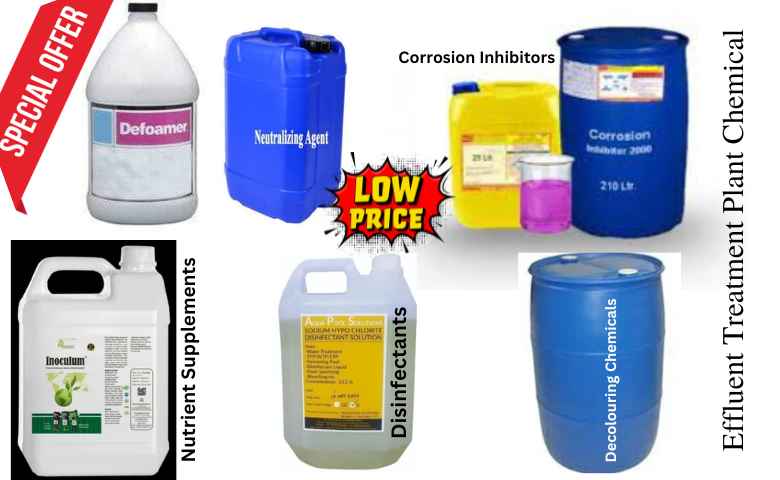Finding the Right Price and Performance in ETP Chemicals
Navigating the complexities of industrial wastewater treatment can be daunting. But fret not! This article sheds light on ETP chemicals, your allies in achieving clean water discharge at competitive prices in Bangladesh.

The Powerhouse of Wastewater Purification
ETP chemicals play a vital role in transforming industrial wastewater into a safer, more environmentally friendly form. From textile factories to food processing plants, these chemicals address a wide range of industrial pollutants.
Demystifying ETP Chemical Costs
The price of ETP chemicals depends on several factors, including the type and quantity required. Here’s a glimpse into the cost-effectiveness of ETP chemicals in Bangladesh:
- Aluminum Sulfate (Coagulant): This versatile chemical starts at an economical BDT 50-750 per kg, making wastewater treatment accessible for various industries.
A Global Perspective on ETP Chemical Prices
While Bangladesh offers competitive pricing, comparing prices on platforms like Alibaba can give you a broader market understanding.
A Symphony of Treatment Solutions
ETP chemicals work in harmony to achieve optimal wastewater treatment. Here’s a breakdown of their key functions:
- Coagulants & Flocculants: These tag-team players remove suspended solids and pollutants through coagulation and flocculation.
- Neutralizing Agents (e.g., Sodium Hydroxide & Sulfuric Acid): They maintain the ideal pH level (between 6.5 and 8.5) for efficient treatment.
- Oxidizing Agents (e.g., Chlorine & Hydrogen Peroxide): They break down complex organic pollutants like dyes and hydrocarbons.
- Disinfectants (e.g., Chlorine & Ultraviolet Light): They eliminate harmful microorganisms, ensuring safe water discharge or reuse.
- Defoamers: They control excessive foam formation, preventing disruptions in the treatment process.
- Nutrient Supplements: These provide essential nutrients for microorganisms, enhancing their ability to break down organic matter biologically.
- pH Adjustment Chemicals: They fine-tune the pH level for optimal chemical and biological treatment processes.
- Corrosion Inhibitors: They safeguard metal components within the ETP system from corrosion, ensuring its longevity.
- Scale Inhibitors: They prevent the buildup of mineral deposits like calcium carbonate, maintaining ETP efficiency.
- Anti-foaming Agents: They control excessive foam formation for smooth and uninterrupted operation.
Affordability Meets Efficiency in Bangladesh
By exploring the Bangladeshi market, you’ll discover that ETP chemicals offer a cost-effective solution for industrial wastewater treatment. Their affordability, coupled with their effectiveness, makes them a compelling choice for businesses committed to environmental responsibility.
